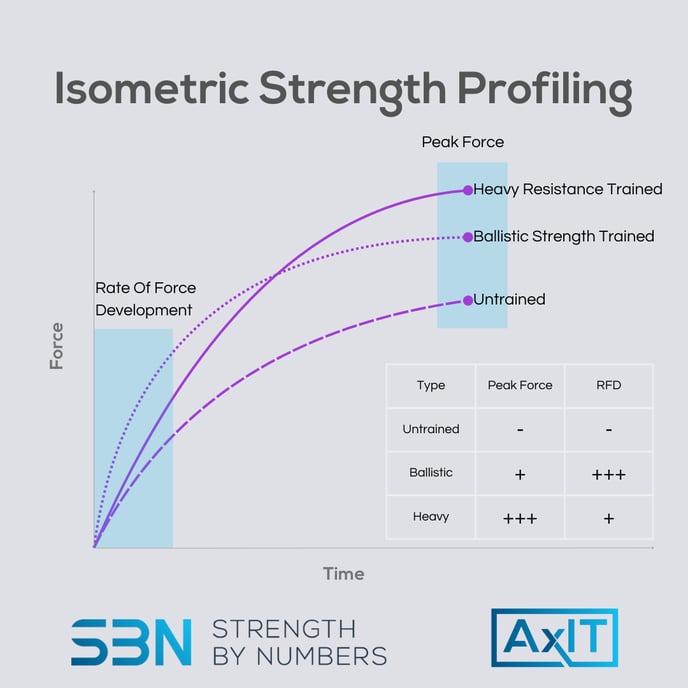Isometric Strength Profiling

Isometric strength testing allows for detailed profiling of an individual’s physical capabilities by measuring common metrics such as peak force and rate of force development (RFD). These metrics provide insights into an athlete’s specific strengths and weaknesses, which can guide training and performance improvement. Here’s how they help in profiling:
-
Heavy Resistance Strength Training: Individuals who engage in heavy resistance training (like powerlifters or bodybuilders) often demonstrate a high peak force, which reflects their ability to generate large amounts of force. However, due to the slower nature of their training, they may have a relatively lower rate of force development (RFD), meaning it takes them longer to reach their maximal force. This makes them very strong, but not necessarily fast in generating force.
-
Ballistic or Explosive Training: On the other hand, athletes focused on ballistic or explosive training (like sprinters or jumpers) typically show a high RFD due to their ability to produce force quickly. However, they may have a relatively lower peak force compared to strength athletes. This makes them fast in applying force, but they might not be able to generate as much total force.
By using tools like AxIT, coaches and trainers can create customized training programs that address specific gaps. For instance:
-
If testing shows high peak force but low RFD, plyometric or ballistic exercises can be emphasized to improve explosiveness.
-
If RFD is high but peak force is lacking, more traditional strength training might be introduced to build overall force output.